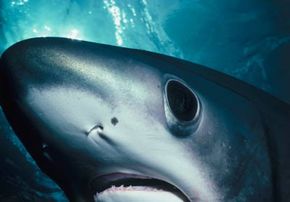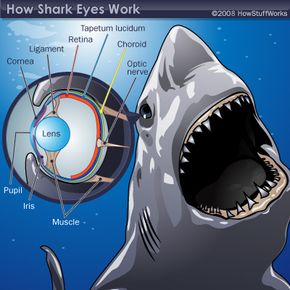If you've seen the movie "Jaws," you can immediately hear the iconic theme song, with its eerie foretelling of what's to come. What's particularly unsettling about scenes with shark attacks is that we, the audience, know what's going to happen. We see the fins closing in on an unsuspecting swimmer and we hear that ominous music. The swimmers, however, have no idea.
Advertisement
When you go swimming or scuba diving in the ocean, your senses are limited. You can't keep your eyes open underwater for a long time, and you must rely on goggles to see what's around you. Your sight can be further complicated by dark and murky water. The only thing you can smell might be the salt of the sea, but you can't take a big breath in without water going straight up your nose. You may be able to hear splashing or nearby boats, but the main sound in your head is usually the thud of your own heartbeat.
Sharks are at a clear advantage here; they have advanced sensory systems that enable them to locate their prey, avoid their predators and find a mate. This is part of why movies like "Jaws" are so scary -- they can find us, but we can't find them. But when it comes down to it, sharks have sensory functions that are very similar to humans. They're just used to working underwater.
Does this seem hard to believe? When you think of a shark, is it hard to picture anything besides a giant mouth of sharp, scary teeth? If you look a little closer, you'll see nostrils just under the shark's snout, holes that lead to an advanced inner ear system and eyes that sometimes appear to glow in the dark. In this article, we'll take a look at how the senses of smell, hearing and sight work for sharks.
Go on to the next page to see if there's any truth to the story about sharks being able to smell a drop of blood from a mile away.



